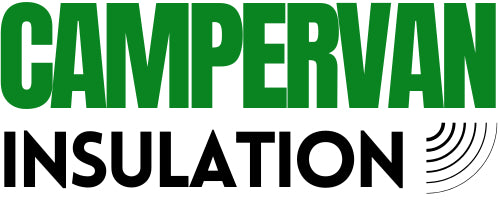How to insulate your van and how much insulation do you need?
Share

How to insulate your van and how much insulation do you need?
Insulating your camper van is essential for maintaining a comfortable interior temperature, reducing energy consumption, and minimising external noise. By using high-quality materials from Campervan Insulation UK, you can achieve effective thermal and acoustic insulation.
Why Insulate Your Campervan?
Proper insulation offers several benefits:
-
Temperature Regulation: Keeps the interior warm in winter and cool in summer.
-
Energy Efficiency: Reduces the need for heating and cooling, saving energy.
-
Condensation Control: Prevents moisture buildup that can lead to mold and rust.
-
Noise Reduction: Minimises road and environmental noise for a quieter living space.

Choosing the Right Insulation Materials
Campervan Insulation UK offers a range of products suitable for different areas of your van:
-
SOShield Thermal Insulation & Vapour Barrier: Ideal for walls, floors, and ceilings, providing excellent thermal resistance and moisture control.
-
GlassMAT HTX High Temperature Foil Faced Insulation: Suitable for areas exposed to higher temperatures, such as near engines or exhausts.
-
PeaceMAT™ XR Sound Deadening Mats: Designed to reduce noise levels, enhancing acoustic comfort inside the van.
- Hydroweld or Absoft Thermal Filler: Suitable as your last layer of insulation and filling the gaps.

How to Insulate Your Campervan
-
Preparation:
-
Clean the Interior: Remove any existing panels, flooring, and debris. Ensure all surfaces are clean and dry.
-
Address Rust: Treat any rust spots with appropriate rust inhibitors to prevent further corrosion.
-
-
Sound Deadening:
- Apply sound deadening mats like PeaceMAT™ XR to large metal panels to reduce vibrations and noise.
-
Thermal Insulation and Vapour Barrier:
-
Walls and Ceiling: Cut SOShield insulation to fit snugly between the structural beams. Use adhesive backing to secure the insulation in place.
-
Floor: Lay SOShield insulation mat on the floor, ensuring full coverage. Seal joints with aluminium foil tape to create a continuous barrier.
-
- Thermal Filler and Insulation: We recommend using Hydroweld or Absoft for your last layer of insulation. Due to the flexibility and texture of this camper van insulation mats (very soft), the mats can be easily pushed into the gaps where an access is limited.
- Finishing: Reinstall wall panels, flooring, and ceiling coverings over the insulated surfaces. Ensure all edges are sealed to maintain insulation integrity.
Calculating the Amount of Insulation Needed
To determine the quantity of insulation required:
-
Measure Surface Areas:
- Measure the length and height of each wall, the ceiling, and the floor to calculate the total area in square meters.
-
Account for Openings:
- Subtract the area of windows, doors, and other openings from the total area.
-
Purchase Accordingly:
- Based on the total area to be insulated, purchase insulation materials. It's advisable to buy slightly more than needed to account for cutting errors or adjustments.
Example Calculation:
-
Walls: If each wall is 4 meters long and 2 meters high, the area per wall is 8 square meters. For two walls: 8m² x 2 = 16m².
-
Ceiling: Assuming a length of 4 meters and width of 2 meters: 4m x 2m = 8m².
-
Floor: Same as the ceiling: 8m².
-
Total Area: 16m² (walls) + 8m² (ceiling) + 8m² (floor) = 32m².
-
Subtract Openings: If windows and doors total 4m²: 32m² - 4m² = 28m².
-
Purchase: Acquire insulation materials to cover approximately 28 square meters, adding an extra 10% to account for waste: 28m² x 1.10 ≈ 31m².
By following these steps and using quality products from Campervan Insulation UK, you can effectively insulate your campervan, enhancing comfort and efficiency during your travels.
